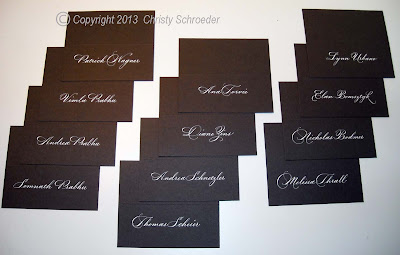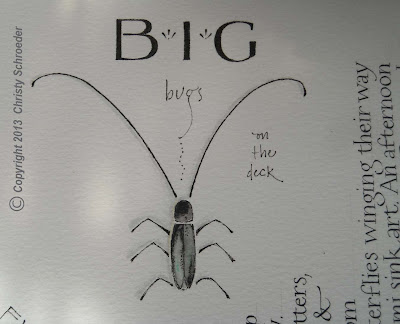My students have heard me say, time and again, that teaching calligraphy has made me a better calligrapher. Through written and verbal instruction, and hands-on demonstration, I need to be able to explain the forms I am creating and relate individual letters to a bigger picture, calligraphically speaking.
 | ||
| Copperplate sample; quote by Alfred Fairbank |
I was first introduced to the Copperplate style more than twenty years ago; I have been doing Copperplate in the form of commissioned work for at least the last ten years. I have been asked to teach this hand, but have never felt ready until now. Why? I think it's a matter of finally feeling confident in recognizing the little details that make these letters so beautiful.
 |
| Dr. Ph Martin's Bleedproof White on gunmetal metallic paper |
Aiming for consistency between the related letters is always key when learning a new hand. Sometimes it's difficult to realize that we need to "learn to walk before we run" and that "flying lessons" come when the basic forms are fully understood.
 |
| Rose gold (mixed acrylic) on blue; Hunt 22 nib |
But Copperplate lends itself well to some creative flourishing, as well as the opportunity to use a variety of different capital letter styles.
 |
| Walnut ink on white; Hunt 22 nib; Spencerian style capitals |
And we don't always have to write on a straight line!
 |
| Winsor & Newton Permanent Yellow Deep gouache; Brause Rose nib |
So, beginning in October, up to ten unsuspecting souls will join me in "walking lessons" with the pointed pen, and in six weeks we will progress toward "running"...well, maybe a trot. :)
Flying lessons will have to wait for the next class—I have to leave something to keep them coming back!














































